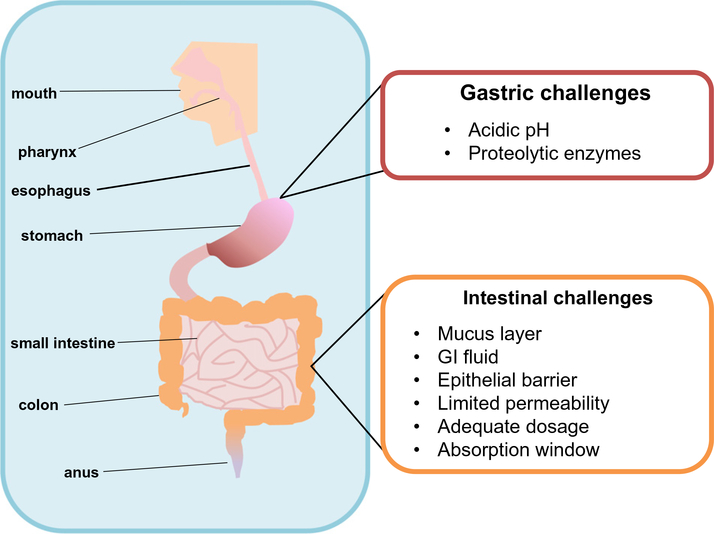Fig. 1.
Physiology of the gastrointestinal system and the challenges it presents for oral vaccines. The different segments of the GI tract present a variety of biological and physicochemical barriers to prevent the entrance of foreign material onto the body. The upper GI tract includes the mouth, pharynx, esophagus and the stomach. The lower GI tract encompasses the small intestine, colon, and anus. The stomach is designed to process and break down complex molecules (i.e. proteins) with the action of its acidic pH and proteolytic enzymes. Additionally, once vaccines have gone through the stomach and entered the small intestine, a different set of conditions need to be overcome in order for immunizations to be effective. The presence of a mucus layer, the composition of gastrointestinal fluid, and the action of epithelial barriers, limits the permeability of molecules to the lymphatic system. In order to design successful oral vaccines, careful considerations need to be taken to engineer adequate vaccine delivery vehicles.

